News
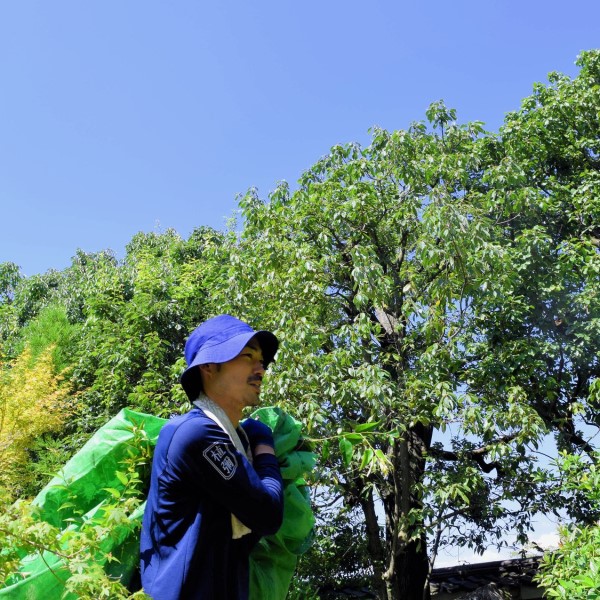
Pruning a Tree on Murin-an’s Outer Border
“Feels like the temperature’s going to go way up this afternoon,” said our gardener one day in September, as he pruned a ring-cupped oak whose overgrown foliage was starting to stand out. More pruning was necessary than expected, resulting in a tremendous number of branches being cut. Our gardener carried away these branches as he looked carefully at the balance between the tree and its surroundings.
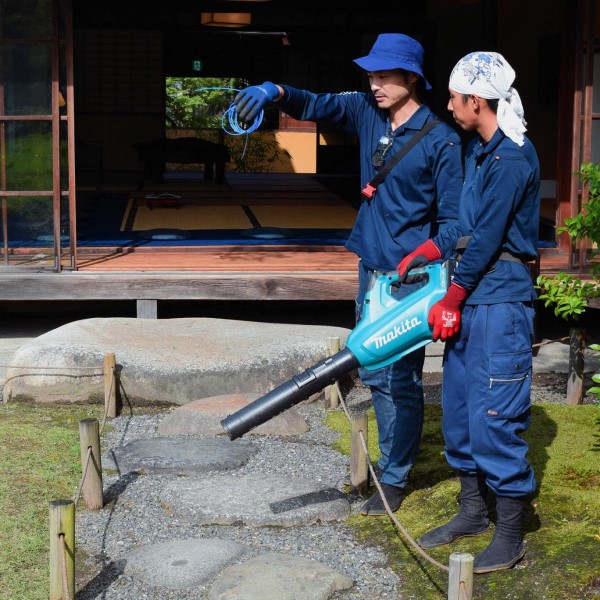
Early Morning Lawn Care
Blades of grass that were lush green in the summertime are now slowly starting to turn brown. We mowed Murin-an’s lawn so its blades were an even height and then used a blower and whisk broom to thoroughly remove any grass blades from the stepping stones and garden path. For hours after we opened, the fresh scent of the lawn on the wind could be smelt even from inside the main house.
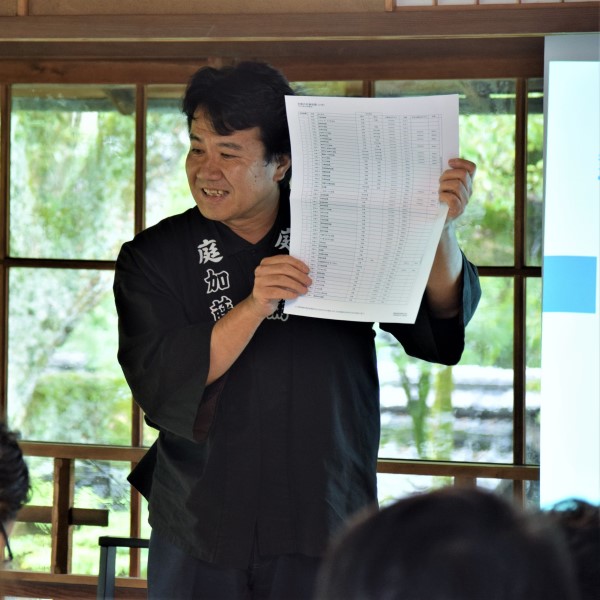
Seminar Series “The History of Japanese Gardens,” No.3
On the afternoon of September 21 (Sat.), Ueyakato Landscape’s president Tomoki Kato gave a seminar lecture on the history of Japanese gardens. He reviewed points from his last lecture and used a screen presentation to explain the evolution of the garden through being a symbol of power to imperial court gardens and gardens featuring shoin-zukuri architecture.
Our next lecture, “The History of Japanese Gardens,” No.4, will cover the age of Kobori Enshu, and will focus on Konchi-in and the garden in front of the abbot’s quarters at Nanzen-ji Temple.
https://murin-an.jp/events/event-20191109/
*Participation for this seminar is currently full. We ask those wishing to attend to understand that there is a waiting list for this event.
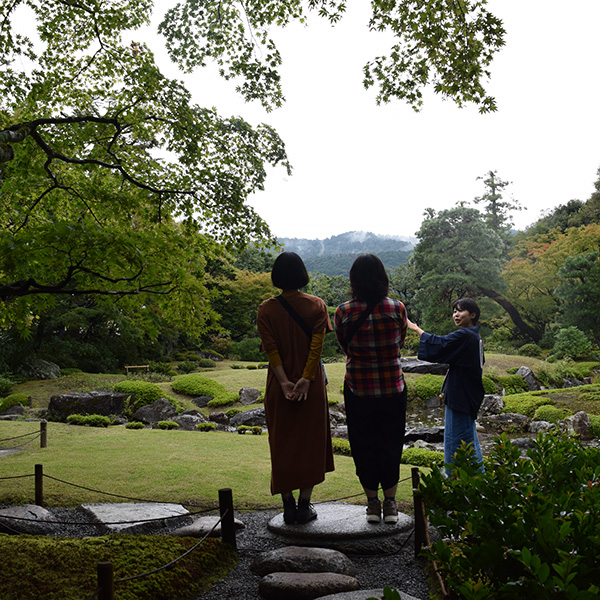
Weekend Garden Guided Tours
On the morning of September 21 (Sat.), we held a weekend guided tour of Murin-an’s garden. Immediately after the tour got started, it began to drizzle, bringing out ripple patterns on the water’s surface. When the rain stopped, our guests’ then turned their eyes toward the moss and enjoyed a relaxing time.
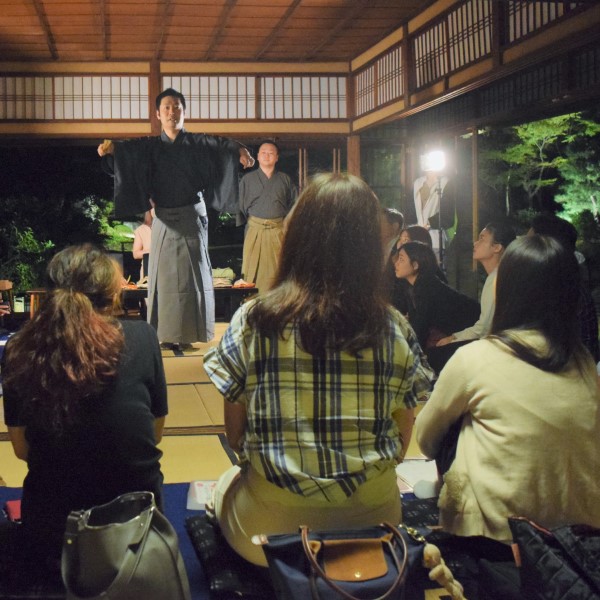
An Intensive Seminar by the Udaka Family: The Noh
On September 19 (Thurs.), we lit up the garden for a seminar on Noh theater. To allow our participants to experience Noh more intimately, Noh performers Tatsushige and Norishige Udaka and Noh mask carver Udaka Keiko talked about how to appreciate Noh song and dance and how to look at Noh masks and dress.
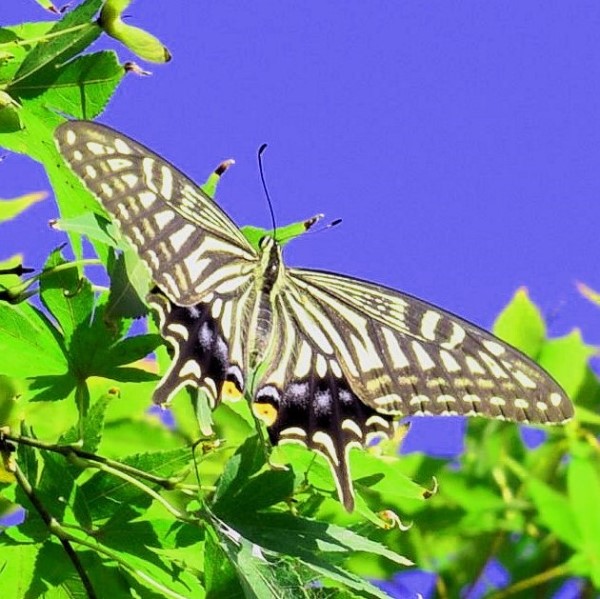
A Citrus Swallowtail Takes a Rest
On top of the leaves of the large maple tree on the north side of Murin-an’s 8-tatami mat space, we found a citrus swallowtail basking in the morning sun. It lay still there until the sun rays had warmed its body up, and then flapped around the maple tree. Later, it flew outside Murin-an in search of nectar from floral nectar. It was a special guest that came to Murin-an to spend the night.
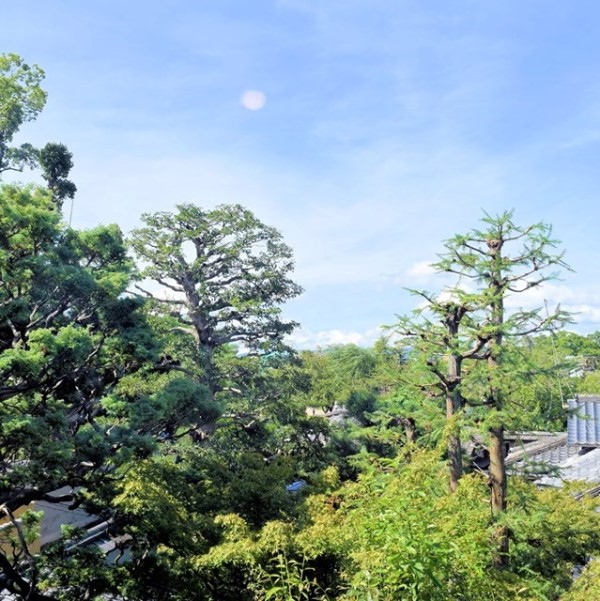
Pruning the Kurogane Hollies
In the garden visible from Murin-an’s reception window, there is a large Kurogane holly. Its foliage was starting to look overgrown so we pruned it. We covered shrubs to avoid damaging them and then removed unnecessary branches from the tree’s crown.
Looking at the tree from below, we could see the gradual increase in the amount of sunlight pouring through it and the brighter feeling that resulted.
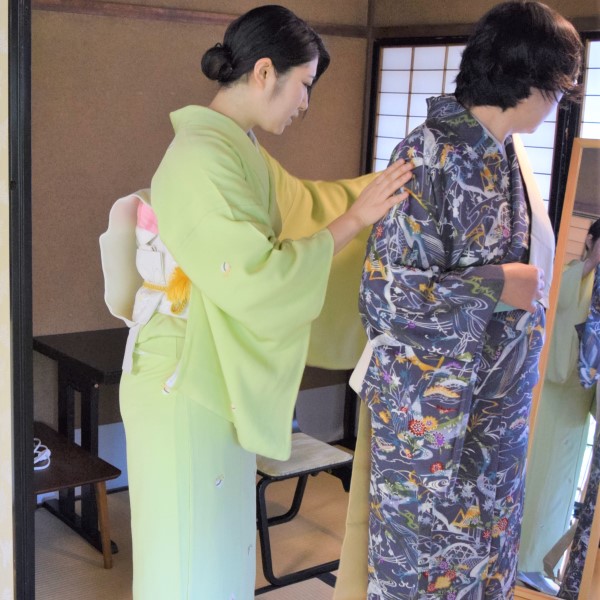
Murin-an Kimono School
On the afternoon of September 12 (Thurs.), we held a kimono wearing school on the second floor of the main house. Our second lesson for September focused on how to tie the kimono’s obi sash. Ms. Mai Ogihara taught us how to wear a kimono Sasashima-style. Come to Murin-an to experience the kimono and also learn about kimono basics!
Our next class will be held on October 2 (Wed.).
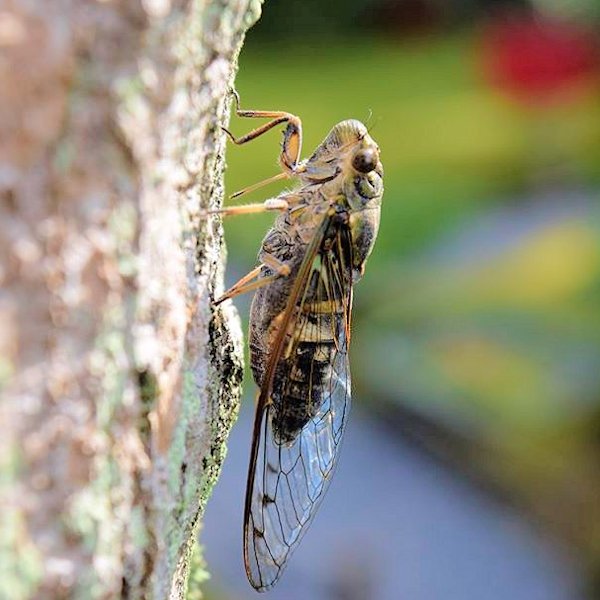
The Chirps of the Cicada Come to a Close
The steady rain of cicada chirps that during summer rang from Murin-an to the Higashiyama mountains has died down considerably now, going from a grand chorus to a quartet, and finally to a solo song.
Last week, looking at the garden as a performance hall, it felt as though we were enjoying natural music, with the cicadas’ chirps performing melodies to the continuous accompaniment of the stream’s cascades.
With the passing of just a little more time, we’ll be able to hear yet another concert. And next summer, a grand symphony will resonate from Murin-an’s stage.
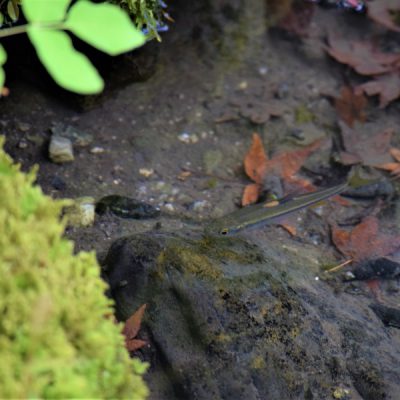
Numamutsu Fish Leap from the Water’s Surface
When the sun begins setting, we can now see numamutsu (nipponocipris sieboldii) fish leaping from the water’s surface where Murin-an’s stream widens. We don’t know if they’re aiming for insects above the water or if they’re trying to dodge one another after a near-miss encounter underwater, but they leave ripples everywhere.